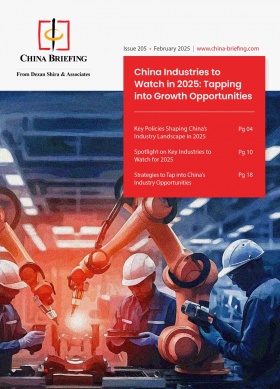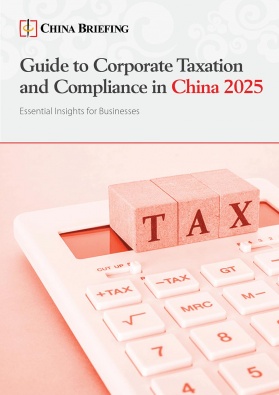Albanese’s Second Visit to China: What Was Achieved?
Australian Prime Minister Anthony Albanese’s China visit in July 2025—his first since re-election—yielded a series of important agreements. From trade and digital economy to green energy and tourism, this article breaks down the official outcomes and explores emerging business opportunities and strategic outlook for China-Australia relations.
From July 12 to 18, 2025, Australian Prime Minister Anthony Albanese paid his second official visit to China at the invitation of Chinese Premier Li Qiang. This marked his first trip to China since securing a second term in office in May 2025, and it came at a pivotal moment as the China-Australia Comprehensive Strategic Partnership enters its second decade. The visit—described by Albanese as “very successful”—reflected both sides’ shared interest in advancing a more stable, constructive bilateral relationship following years of diplomatic turbulence.
During the visit, the two countries released a joint outcomes statement that outlined a broad agenda for cooperation. The outcomes reaffirmed mutual respect, practical engagement, and the expansion of trade and investment. Prime Minister Albanese’s stop in Chengdu, beyond the traditional diplomatic destinations of Beijing and Shanghai, also sent a clear signal: Australia is increasingly looking to tap into a wider swath of the Chinese market beyond the coastal hubs.
Also Read: China-Australia Economic Ties: Trade, Investment, and Latest Updates
Key outcomes from the 2025 China-Australia Leaders’ Meeting
The Joint Outcomes Statement, issued following Prime Minister Albanese’s talks with Premier Li Qiang, reaffirmed both governments’ commitment to stable and constructive engagement. Key outcomes spanned trade, investment, people-to-people links, and multilateral cooperation. Highlights include:
Trade and economic cooperation
Economic engagement once again served as a cornerstone of bilateral relations. During the visit, both sides reached a series of new agreements and reaffirmed commitments under the China-Australia Free Trade Agreement (ChAFTA). According to the official joint outcomes statement:
-
Trade access: Both governments committed to deepening cooperation in customs procedures, quarantine and inspection, and resolving trade impediments through dialogue, including via the WTO where needed.
-
Agriculture: Australia and China agreed to enhance market access for agricultural and seafood products, with faster risk assessments and streamlined import approvals.
-
Investment facilitation: The two sides welcomed increased two-way investment in renewable energy, resources, and manufacturing, and expressed interest in cooperating on industrial innovation and green technology.
-
Digital trade and e-commerce: China and Australia agreed to expand cooperation in cross-border e-commerce, blockchain, digital payment infrastructure, and data governance frameworks.
-
Green economy and ‘green iron’: Discussions also focused on new collaboration opportunities in clean energy—especially solar, wind, and green hydrogen—as well as “green iron” technologies. Australia’s Fortescue Metals Group (FMG) and other players expressed readiness to meet China’s rising demand for low-carbon iron ore products.
These developments point to a maturing economic partnership—one increasingly oriented toward emerging sectors like artificial intelligence, digital transformation, and climate-friendly industrial transition.
Strengthening people-to-people ties and tourism
In a boost to bilateral exchanges, the two countries committed to deepening cultural, education, and tourism linkages. With China now offering visa-free entry for Australian citizens and Australia providing five-year multiple-entry visas—and up to 10 years in some cases—for Chinese tourists, travel between the two countries has seen a strong rebound.
Notably, Chinese tourists spent A$9.2 billion in Australia in the 12 months ending March 2025, accounting for about one-quarter of total spending by short-term international visitors. Payment convenience has also improved, with increasing adoption of UnionPay, Alipay, and WeChat Pay among Australian merchants, further enhancing the tourist experience.
Political dialogue and multilateral cooperation
Albanese’s visit also highlighted a renewed willingness to manage differences and engage in open, regular dialogue. Both sides reaffirmed support for the rules-based international order, regional peace, and multilateral cooperation. China and Australia, as key members of the Regional Comprehensive Economic Partnership (RCEP) and APEC, pledged to work together to restore confidence in multilateral trade systems, promote regional integration, and address global challenges such as climate change and digital governance.
In his concluding remarks, Albanese emphasized that the two countries “may not always agree, but dialogue and engagement are vital,” reiterating Australia’s intention to work with China on the basis of mutual respect, shared interests, and practical outcomes.
Emerging business opportunities: More than traditional trade
While the Australia-China trade relationship has historically been dominated by commodities—iron ore, LNG, and agricultural products—this visit marked a pivot toward future-oriented sectors. Discussions and agreements hinted at a broadening commercial horizon.
The 2025 leaders’ meeting highlighted artificial intelligence (AI), healthcare innovation, and the digital economy as key areas for bilateral collaboration. These sectors not only align with each country’s national development priorities but also offer high-value-added, scalable opportunities for joint ventures, research, and technology transfer.
Green energy and green minerals
Clean energy and decarbonization featured prominently in bilateral discussions, with both countries expressing interest in scaling up cooperation in green hydrogen, solar, wind power, and low-emission materials. One standout area was green iron—iron ore processed with renewable energy—where Australian firms such as Fortescue Metals Group (FMG) signaled their readiness to meet China’s rising demand for low-carbon steel inputs. This creates meaningful new market segments for Australian miners and energy producers seeking to align their operations with global sustainability standards.
For Australian businesses, this cooperation presents a clear opportunity to move up the value chain, especially by integrating renewable energy into resource extraction and processing. Companies operating in clean tech, project development, or green infrastructure stand to benefit from co-investment opportunities, technology partnerships, and a broader policy alignment around net-zero targets. As China looks to diversify its sources of green materials and scale its climate transition, Australia is well-positioned to serve as a stable, transparent, and resource-rich partner.
Artificial intelligence: Joint innovation platforms
AI is emerging as a strategic priority for both countries, not just in commercial applications but also in regulation and ethics. During the visit, both sides explored establishing joint university–industry research labs, particularly in areas such as autonomous driving, predictive analytics, and intelligent resource management. Given Australia’s strengths in applied research and domain-specific expertise—especially in mining, agriculture, and logistics—there is a strong basis for complementary AI collaboration with China, which leads in platform development and digital infrastructure.
For Australian technology firms, this opens the door to accessing larger datasets, testing AI solutions at scale, and partnering with Chinese developers or investors to bring innovations to market. There is also growing value in engaging China in regulatory and standards-setting dialogues, particularly in ethical AI and data governance. Doing so not only improves compatibility with future Chinese regulations but also positions Australian businesses as trusted, globally minded innovators capable of operating in complex international environments.
Healthcare and biopharma: Joint R&D and market access
The healthcare and biopharmaceutical sectors were identified as high-potential areas for collaboration, with both sides acknowledging shared demographic challenges and growing demand for medical innovation. Opportunities highlighted included joint drug development, clinical trial cooperation, and regulatory alignment—especially in cutting-edge fields like oncology, immunotherapy, and personalized medicine. Australia’s strengths in clinical rigor, medical research, and intellectual property protection align well with China’s large patient base and manufacturing capacity.
For Australian biotech firms, this represents a chance to accelerate R&D pipelines, enter new patient markets, and scale manufacturing through Chinese partnerships. Companies can benefit from faster trial recruitment, cost-efficient production, and expanded distribution channels, especially as both countries work to harmonize regulatory processes. By localizing elements of production or forming joint ventures, Australian medical innovations can gain deeper penetration in the Chinese market while retaining global competitiveness.
Future outlook: Toward a pragmatic and resilient partnership
Prime Minister Albanese’s 2025 visit to China came at a symbolic and strategic juncture, marking the beginning of the second decade of the China–Australia Comprehensive Strategic Partnership, first established in 2014. The visit built on the momentum from his historic 2023 trip, which effectively ended a seven-year diplomatic freeze and signaled a reset in bilateral relations.
The 2023 visit was widely interpreted as a course correction from the previous Morrison government’s more confrontational China policy. By re-engaging Beijing through constructive dialogue in 2025, Albanese reaffirmed Canberra’s commitment to stabilizing ties, anchored primarily in resilient economic interdependence. Trade, often described as the “ballast” of the relationship, once again proved to be a powerful stabilizer.
Albanese’s itinerary during the 2025 visit underscored a broader strategic intent. By choosing to visit Chengdu in addition to Beijing and Shanghai, he broke with the traditional mold of Australian prime ministerial visits, which typically focus on China’s political and commercial centers. This signaled Australia’s interest in tapping into China’s dynamic inland provinces and expanding engagement beyond the coastal megacities.
China has remained Australia’s largest trading partner for 16 consecutive years, accounting for nearly one-third of Australia’s total trade. According to the Australian Department of Foreign Affairs and Trade, two-way trade reached almost A$312 billion in 2024. Since the implementation of the ChAFTA in 2015, bilateral trade has seen remarkable growth, despite political headwinds.
Australia’s exports to China remain concentrated in iron ore, energy, and agricultural goods, including beef, wine, and seafood. In return, Chinese exports to Australia—such as electric vehicles, consumer electronics, and household goods—continue to gain popularity due to competitive pricing and quality. This complementary structure has allowed economic ties to deepen even during periods of political strain.
Looking ahead, the second decade of the China–Australia Comprehensive Strategic Partnership may be shaped not only by economic complementarity but also by both countries’ shared support for multilateralism, climate action, and regional integration. While challenges remain, the path forward appears more open and more grounded in mutual interests.
About Us
China Briefing is one of five regional Asia Briefing publications, supported by Dezan Shira & Associates. For a complimentary subscription to China Briefing’s content products, please click here.
Dezan Shira & Associates assists foreign investors into China and has done so since 1992 through offices in Beijing, Tianjin, Dalian, Qingdao, Shanghai, Hangzhou, Ningbo, Suzhou, Guangzhou, Haikou, Zhongshan, Shenzhen, and Hong Kong. We also have offices in Vietnam, Indonesia, Singapore, United States, Germany, Italy, India, and Dubai (UAE) and partner firms assisting foreign investors in The Philippines, Malaysia, Thailand, Bangladesh, and Australia. For assistance in China, please contact the firm at china@dezshira.com or visit our website at www.dezshira.com.
- Previous Article China Manufacturing Tracker 2025
- Next Article China’s Strategy for Advancing High-End Medical Devices in 2025







